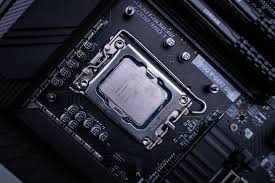Guide
How to Underclock your CPU

Changing the parameters of a computer so that it operates at a clock rate that is slower than the factory preset is referred to as underclocking or downclocking. Underclocking is something that is often performed at the manufacturer level, but it is also possible for the end user to perform.
These days, some laptops and systems come equipped with a function known as automated underclocking. This function checks to see if the system requires underclocking, and if it does, it automatically slows down the system’s clock rate without requiring any intervention from a human.
Read Also: How to Control the CPU Fan on Windows 11
What is its Purpose?
It’s possible that you’ve noticed that your computer heats up on a regular basis and, in the case of laptops, also depletes the battery in a rather short amount of time. The objective of lowering the speed of a computer’s processor, also known as underclocking, is to increase the device’s battery life while simultaneously lowering its power consumption and the amount of heat it emits. In addition to this, it has been demonstrated to lengthen the lifespan of the hardware and lessen the noise produced by the mechanical components.
When done correctly, reducing the speed of a computer’s processor can often improve the system’s reliability and compatibility with other components.
Is Underclocking Safe?
There are no known risks. Underclocking is risk-free and simple to undo, in contrast to overclocking, which can be harmful if performed in excess or incorrectly. If the system determines that it is necessary to do so, it will reset to the default settings, but you can also do this manually if you choose. Underclocking is beneficial in terms of reducing heat emissions, extending the life of the battery, and decreasing the amount of power consumed. This will result in a modest decrease in the overall performance of the system.
How to Underclock your CPU with Windows
There are two different ways to reduce the speed of the CPU when using Windows. Either by decreasing the Thermal Design Point (TDP) through the settings of the Intel Thermal Framework or through the settings of the Processor Power Management, you are able to lower the clock speed of the processor.
First, we will investigate the following approach:
- Right-click the Start button, and then select Settings from the menu that appears.
- On the Settings screen, select System by clicking on it, and then navigate to the ‘Power & Sleep’ section.
- Go to the area labelled “Related Settings,” and then click on the “Additional Power Settings” button.
- Simply select the “Change Plan Settings” button.
- Simply select the “Change advanced power settings” option.
- To view the Intel Dynamic Platform and Thermal Framework Settings, enlarge the window by clicking the button next to it.
- After expanding the ‘Config TDP Level’ menu, select ‘Battery’ from the drop-down menu that appears.
- Next, choose ‘Low TDP’ from the dropdown menu that’s located next to the ‘High TDP’ option.
- Click the Apply button, then click the OK button.
The second way is very helpful in situations in which you are unable to locate the Intel® Dynamic Platform choice within your system.
- Right-click the Start button, and then select Settings from the menu that appears.
- On the Settings screen, select System by clicking on it, and then navigate to the ‘Power & Sleep’ section.
- Go to the area labelled “Related Settings,” and then click on the “Additional Power Settings” button.
- Simply select the “Change Plan Settings” button.
- Simply select the “Change advanced power settings” option.
- To enlarge the Processor Power Management section, click the expand button.
- The Maximum Processor state can be expanded by clicking the button that is located next to it.
- Select the Battery option from the menu.
- Modify the percentage level at which you want the processor to run in accordance with your preferences.
- Simply hit the Apply button.
Video
-

 Business4 years ago
Business4 years ago7 Convincing Reasons Why Your Business Needs a 360 Virtual Tour
-

 Guide3 years ago
Guide3 years agoHow to Turn On and Off on PS5 Controller
-

 Gaming7 years ago
Gaming7 years agoDestiny 2: Black Armory – The Trailer Revealed For The Gameplay And New Exotic Weapons
-

 Destiny 22 years ago
Destiny 22 years agoHow to Farm Silver Leaves and Ash in Destiny 2












